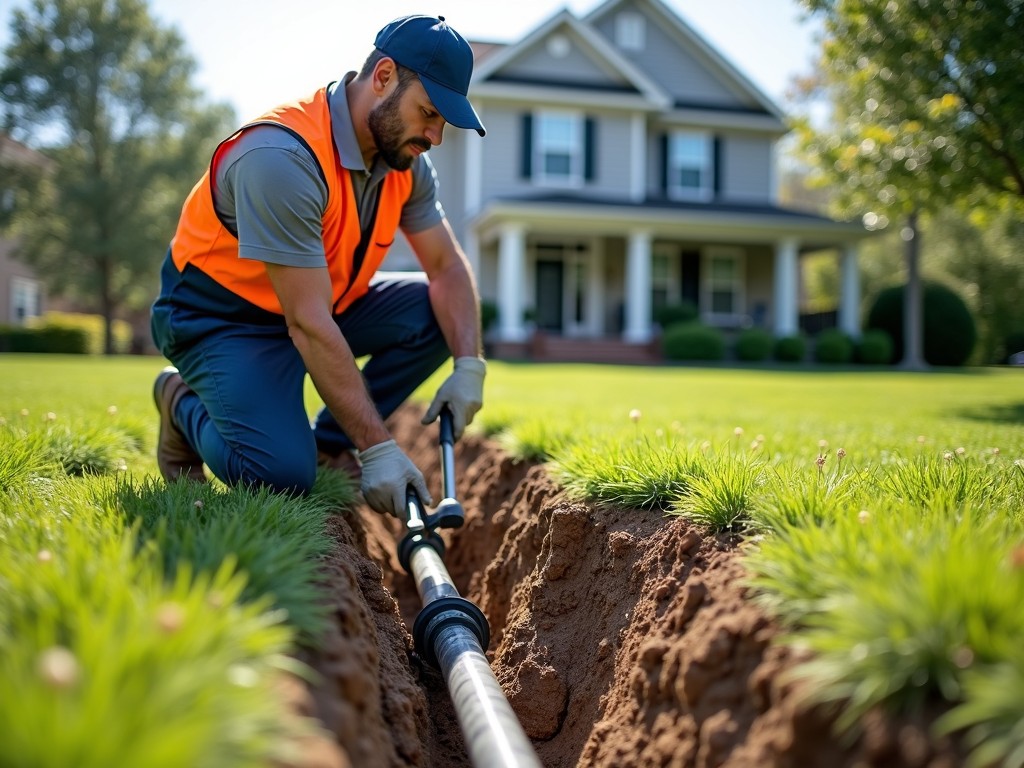A foul smell in your yard. Toilets that bubble for no reason. Sinks that take forever to drain. If you think these are just small plumbing quirks, think again.
These are often the early signs that something much bigger is going wrong underground.
Most people don’t think twice about their sewer lines until they have a full-blown emergency. By then, you’re probably dealing with backed-up drains, costly cleanups, and urgent calls to a plumber. But sewer line issues rarely appear out of nowhere. They tend to whisper before they scream.
Knowing what to look for early can save you a lot of money, stress, and damage to your home.
The Trouble Starts Below the Surface
Sewer lines carry waste and water away from your house, making them a critical part of your plumbing system. But they’re buried deep underground, which means when things go wrong, the signs often start small and subtle.
So, what causes sewer line problems in the first place?
- Tree roots – Roots naturally seek moisture, and old pipes are an easy target.
- Ground shifts – Soil movement from rain, drought, or nearby construction can crack or collapse a pipe.
- Age and corrosion – Older pipes made from cast iron or clay break down over time.
- Improper flushing – Fat, grease, wipes, and other debris build up and create clogs.
- Poor installation – Bad connections or cheap materials can mean trouble from day one.
Now, let’s break down the early warning signs that your sewer line could be in trouble.
Slow Drains in Multiple Areas
One slow sink might just be a clog. But when it’s more than one drain moving slowly, it points to a larger blockage deep in the main line. Pay attention to which drains are affected. If it’s the kitchen, bathrooms, and laundry, there’s a good chance the issue is in the sewer line itself. The sooner you get in touch with a professional for sewer line repair services, the cheaper and easier it usually is to sort out, before it turns into a bigger, messier problem.
Strange Sounds from Pipes
Gurgling noises from toilets or drains shouldn’t be ignored. These sounds mean air is trapped in the plumbing system, usually caused by a blockage or crack that disrupts water flow. If you flush the toilet and the shower drain bubbles, or you hear water moving behind walls when nothing’s on, you may be dealing with a sewer line issue.
Unpleasant Smells
One of the more obvious signs is the smell of sewage, especially around floor drains, basement sinks, or outside near where your sewer line runs. Sewer gas has a distinct, nasty odor that should never be present inside or around your home. If you smell it, there’s likely a break or crack in the line allowing gas to escape.
Patches of Bright Green Grass
Take a look at your yard. If one section is noticeably lusher than the rest, and you haven’t been watering unevenly, there could be a leak underground. Sewage acts as a fertilizer, so leaks can cause certain patches of grass to thrive while others remain dry or patchy.
Wet Spots or Sinkholes
Along with greener grass, water pooling in your yard is another sign that something’s wrong below the surface. This might look like soggy spots even when it hasn’t rained, or small sinkholes forming where the ground has softened due to a leak. This isn’t just a plumbing issue anymore; it’s a safety concern for your property.
Increased Pest Activity
Rodents and insects are drawn to sewage leaks. If you notice a spike in cockroaches, flies, or even rats near your home, they may be following the scent of waste escaping from a cracked line. And once they find a way in, it’s hard to get them out.
Toilet Backups and Overflowing Fixtures
This is the red-alert stage. If water backs up into the tub when you flush, or your toilets are overflowing for no apparent reason, the main sewer line is likely blocked. At this point, regular plunging and drain cleaner won’t help. Immediate inspection is necessary before the problem turns into a full-scale backup inside your home.
Don’t Wait for the Flood
Sewer lines are out of sight, but they shouldn’t be out of mind. Most of the early signs are easy to miss unless you know what to look for. Catching them early is the difference between a quick fix and a full excavation.
If you’ve noticed a few of these signs—or even just one that keeps happening—it’s worth getting a professional inspection. You’ll save yourself a lot of time, money, and stress in the long run. Because when it comes to your home, peace of mind starts underground.
